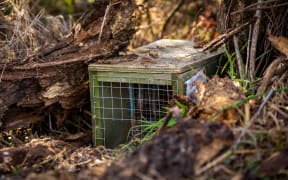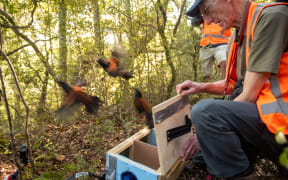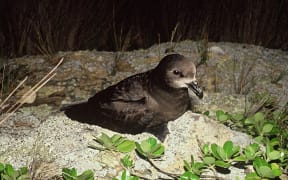Conservation groups and iwi are joining forces in a bid to make Farewell Spit at the top of the South Island predator free.

HealthPost Nature Trust chair Peter Butler and Onetahua Restoration project spokesperson Sky Davies. Photo: RNZ / Samantha Gee
An ambitious partnership between Manawhenua ki Mohua, HealthPost Nature Trust and Tasman Environmental Trust hopes to eradicate pests from more than 12,000 hectares stretching from Farewell Spit to the Whanganui Inlet on the West Coast.
The Onetahua Restoration project has received $250,000 from Predator Free 2050 to fund a feasibility study on the eradication.
It has also committed to fund $3 million of the project cost, if the remaining $6m can be raised by other project partners. If it goes ahead, the project is forecast to create up to 50 jobs over five years.
It was the feral pigs on Farewell Spit that first got Peter Butler thinking about what could be done to better protect the seabirds that live and nest there.
Chair of Golden Bay's HealthPost Nature Trust, Butler is on the management team behind the Onetahua Restoration project.
"The gannets nest right at the very tip of the spit and you can see that's sort of a defensive thing, it's as far away as they can get from from predators and now only about a metre above sea level.
"They're going to start nesting soon and the feral pigs are already quite close."
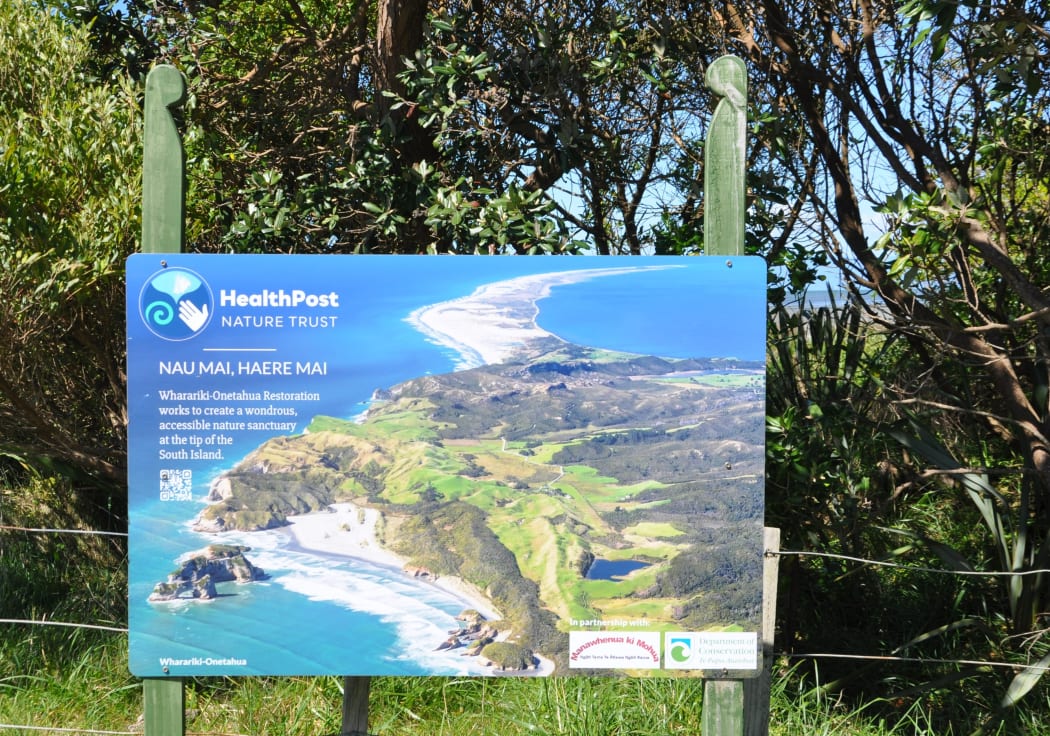
The HealthPost Nature Trust had a vision in 2017 to create an ecosanctuary at the northern tip of the South Island. Photo: RNZ / Samantha Gee
It's not just gannets that call Onetahua home; sooty shearwaters, bar-tailed godwits and red knots are among the birds that flock to its shores.
Farewell Spit is listed as a wetland of international importance for shorebirds under the UN Ramsar Convention but possums, mustelids and rats also threaten wildlife in the area.
"Shorebirds are really badly endangered in New Zealand and there's very little area for them where there's not people walking dogs, whereas what we've got here is 25 to 30 kilometres, where the public's only allowed a couple of kilometres and the rest of it is already really well protected," Butler said.
The Onetahua Restoration project aims to extend the work done by the HealthPost Nature Trust at the Wharariki Ecosanctuary, which protects three hectares of coastal headland at nearby Cape Farewell after the construction of a 200 metre long predator proof fence in late 2019.
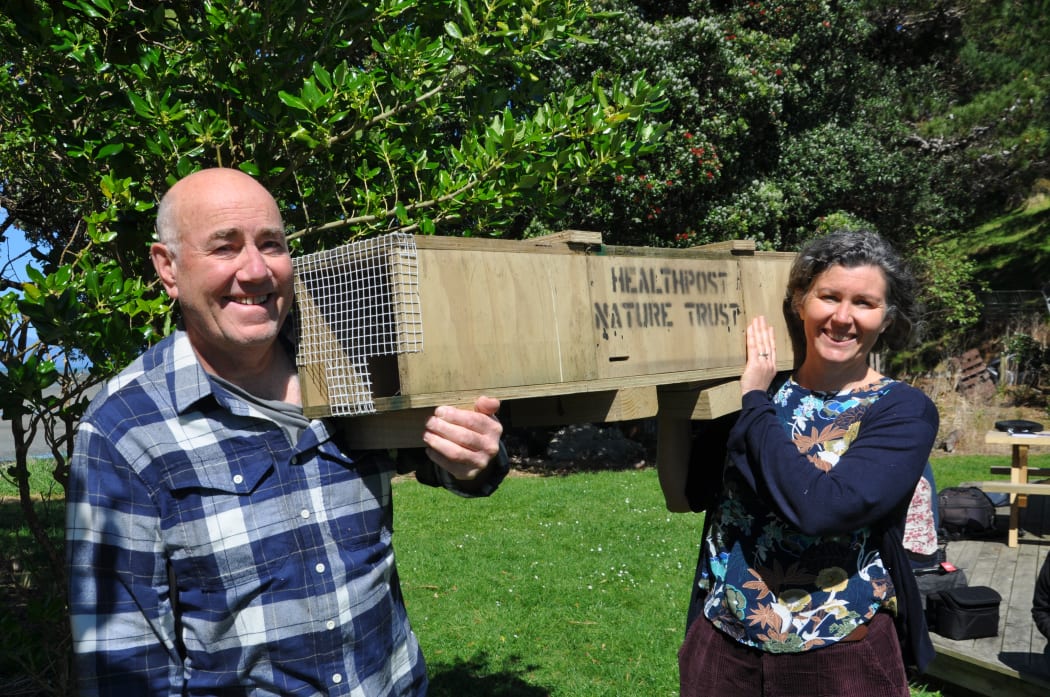
HealthPost Nature Trust chair Peter Butler and Onetahua Restoration project spokesperson Sky Davies with a trap. Photo: RNZ / Samantha Gee
Butler said the area is a good spot for further investment and many of the surrounding landowners are already trapping for predators, alongside the Department of Conservation.
"There is some scepticism, I think that a huge area like this with dense bush that you could actually achieve eradication, but if technology keeps up, we'll get there."
Department of Conservation Takaka operations manager Dave Winterburn said the project will complement existing predator control work done in what can be a challenging environment.
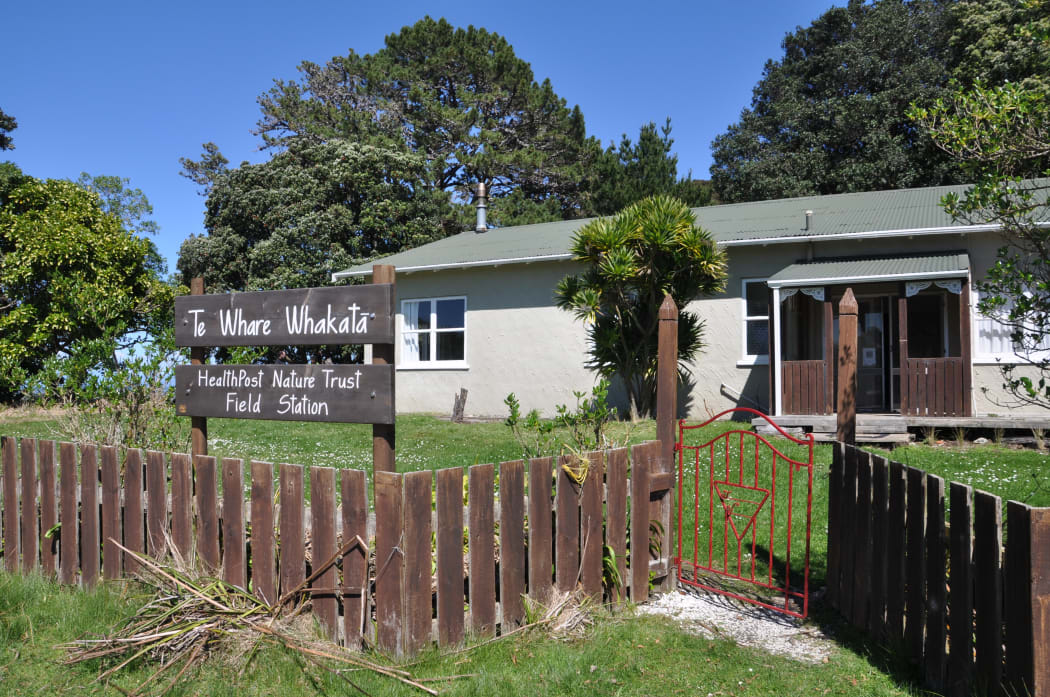
The conservation base Te Whare Whakatā at the base of Farewell Spit. Photo: RNZ / Samantha Gee
At 28km long, it was a long way to reach the end of the sandspit to do predator control, but it also meant the species living on it could be protected.
Sky Davies of the Onetahua Restoration project said the feasibility study was currently under way and due to be complete by the end of the year, with a five- to six-year eradication programme to be launched by mid-2022.
"This is a community led project that builds on a huge amount of work and those years and put in by volunteers and as we're really working to get the wider support of the landowners and the community and build the vision for this project from the ground up.
"We would just love to see a just thriving abundant bird life out here, for it to be raucous and a really safe place for birds to breed, live and really thrive."
Davies said the long-term vision is to build on the existing conservation projects in Mohua, Golden Bay.

